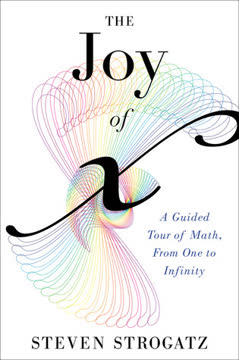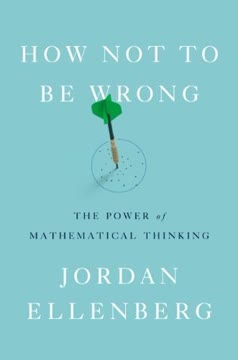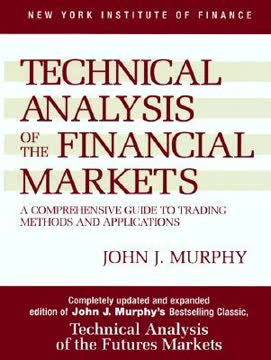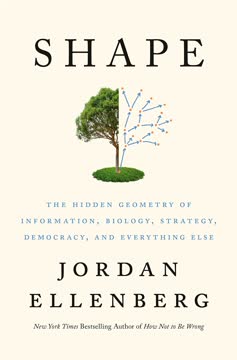重点摘要
1. 数盲症:无法处理数字的普遍现象
“数盲症,即无法舒适地处理基本的数字和概率概念,困扰着许多原本知识渊博的公民。”
定义及影响。 数盲症指的是无法理解和运用基本数学概念,特别是数字和概率。这一普遍问题影响了各行各业的人,包括那些受过良好教育的人。数盲症的后果远不止简单的算术错误:
- 个人理财:难以预算、理解贷款或评估投资机会
- 健康决策:误解医学统计或风险因素
- 政治参与:无法根据数据批判性地评估政策
- 消费选择:容易被误导性广告或骗局欺骗
文化接受度。 与其他形式的无知不同,数盲症往往在社会上被接受,甚至被炫耀。人们自豪地宣称自己无法平衡支票簿或进行基本计算,这强化了数学技能是天生的而非后天习得的误解。
2. 估算和心算在日常生活中的力量
“如果对常见的大数字没有一定的了解,就不可能对每年有超过一百万美国儿童被绑架的恐怖报道做出适当的怀疑,或对携带百万吨爆炸力的弹头——相当于两十亿磅TNT——做出适当的冷静反应。”
培养数字感。 估算和快速心算的能力对于在现代世界中导航至关重要。这项技能使个人能够:
- 快速评估声明和统计数据的可信度
- 在时间紧迫的情况下做出明智的决定
- 理解各种背景下的规模和比例
实用技巧。 提高估算技能的方法包括:
- 将数字四舍五入以简化计算
- 使用基准和比较(例如,一个国家的人口,城市之间的距离)
- 在日常生活中定期练习心算
通过磨练这些技能,人们可以成为更具批判性的资讯消费者,并在个人和职业环境中做出更明智的决策。
3. 概率和巧合:理解事件的可能性
“悖论的结论是,不太可能发生的不可能事件不发生的可能性很小。”
概率的反直觉性。 许多人难以理解概率,导致对事件可能性的误解。这种误解可能导致:
- 对罕见但戏剧性事件的过度反应(例如,恐怖袭击)
- 低估常见但不太引人注目的风险(例如,车祸)
- 基于表面巧合的伪科学信仰
关键概念:
- 大数法则:随着样本量的增加,结果趋向于预期概率
- 生日问题:在23人的群体中,有50%的几率两人同一天生日
- 回归均值:极端结果往往会被更平均的结果所跟随
理解这些原理有助于个人做出更理性的决定,避免被看似不可能的事件或模式误导。
4. 伪科学与数盲症的关系
“事实上,应用旧数学往往比发现新数学更困难。任何一点无稽之谈都可以被计算机化——占星术、生物节律、易经——但这并不使这些无稽之谈更有道理。”
伪科学的吸引力。 数盲症常常导致人们接受伪科学信仰,这些信仰为复杂现象提供了简单的解释。常见的例子包括:
- 占星术和星座运势
- 心灵预测和超感官知觉
- 没有科学证据的替代医学
- 基于误解统计的阴谋论
批判性思维技能。 为了对抗伪科学:
- 寻找可证伪的声明和可重复的结果
- 理解相关性和因果关系的区别
- 了解认知偏见,如确认偏见
- 寻求同行评审的科学来源
通过发展这些技能,个人可以更好地区分合法的科学声明和伪科学胡言乱语,从而在生活的各个方面做出更明智的决策。
5. 数盲症和数学焦虑的心理根源
“数学焦虑,谢拉·托比亚斯称之为数学焦虑。在《克服数学焦虑》中,她描述了许多人(尤其是女性)对任何形式的数学,甚至是算术的阻碍。”
数学焦虑的起源。 许多因素导致了数学焦虑和数盲症的发展:
- 早期对数学的负面体验
- 数学本质上困难的文化态度
- 关于谁能在数学上表现出色的刻板印象(例如,性别偏见)
- 强调死记硬背而不是理解概念
克服心理障碍。 解决数学焦虑的策略包括:
- 将数学重新框定为解决问题的工具,而不是抽象学科
- 关注数学概念的实际应用
- 将复杂问题分解为较小的、可管理的步骤
- 寻求支持性的学习环境和资源
通过解决数学理解的心理障碍,个人可以增强对自己能力的信心,克服数盲症。
6. 统计学、权衡和社会决策
“天下没有免费的午餐,即使有,也不能保证不会消化不良。”
统计在政策中的作用。 统计素养对于在个人和社会层面做出明智的决策至关重要。关键概念包括:
- 理解民意调查和调查中的误差范围和置信区间
- 认识到样本量和选择偏差的重要性
- 评估政策决策中固有的权衡
平衡竞争利益。 许多社会决策涉及权衡不同的风险和利益:
- 公共卫生措施与经济影响
- 环境法规与行业增长
- 个人隐私与集体安全
通过提高统计素养,公民可以更好地参与民主进程,评估各种政策提案的优劣。
7. 相关性、因果关系和常见统计错误
“相关性和因果关系是两个完全不同的词,数盲者比大多数人更容易混淆它们。”
区分相关性和因果关系。 最常见的统计错误之一是混淆相关性和因果关系。这可能导致:
- 错误归因于因果关系
- 忽视重要的混杂变量
- 从数据中得出错误的结论
误解的例子:
- 将冰淇淋销售与犯罪率联系起来(两者在夏季都增加)
- 假设教育水平直接导致收入更高(忽略家庭背景、职业选择等因素)
避免常见陷阱。 提高统计推理能力的方法包括:
- 寻找替代解释和混杂变量
- 考虑因果关系的方向(如果存在的话)
- 注意选择偏差和抽样错误
- 理解观察研究与对照实验的局限性
通过对统计概念的更细致理解,个人可以更好地解释数据,避免得出误导性的结论。
8. 数学素养在现代社会的重要性
“数学作为一种有用的工具,或作为一种思维方式,或作为一种乐趣的来源,这一概念对大多数小学教育课程(即使那些教材是合适的)来说是相当陌生的。”
数理素养的广泛影响。 数学素养对于:
- 个人财务管理
- 许多领域的职业发展
- 知情公民和政治参与
- 批判性思维和解决问题的技能
改善数学教育。 在社会层面解决数盲症的方法包括:
- 强调数学在教育中的实际应用
- 将解决问题和估算技能纳入课程
- 推广关于数学能力的成长心态
- 为成年人提供提高数理技能的资源
通过认识到数学素养的重要性,并在个人和社会层面采取措施加以改善,我们可以创造一个更有见识、更具批判性和更有能力的公众,更好地应对现代世界的复杂性。
最后更新日期:
FAQ
What's "Innumeracy: Mathematical Illiteracy and Its Consequences" about?
- Overview: The book, written by John Allen Paulos, explores the widespread issue of innumeracy, which is the inability to comfortably deal with numbers and probabilities.
- Consequences: It discusses the real-world consequences of mathematical illiteracy, such as susceptibility to pseudoscience, poor decision-making, and misunderstanding of risks.
- Examples and Principles: Paulos uses a variety of examples, from stock-market scams to pseudoscientific beliefs, to illustrate how innumeracy affects individuals and society.
- Educational Insight: The book also delves into the educational system's role in perpetuating innumeracy and offers insights into improving mathematical literacy.
Why should I read "Innumeracy: Mathematical Illiteracy and Its Consequences"?
- Awareness: It raises awareness about the importance of mathematical literacy in everyday life and its impact on personal and societal decisions.
- Practical Applications: The book provides practical examples and applications of mathematical concepts, making it relevant for understanding real-world issues.
- Critical Thinking: It encourages critical thinking and skepticism, especially towards pseudoscientific claims and misleading statistics.
- Educational Value: For educators and students, it offers insights into how math education can be improved to combat innumeracy.
What are the key takeaways of "Innumeracy: Mathematical Illiteracy and Its Consequences"?
- Importance of Numeracy: Understanding numbers and probabilities is crucial for making informed decisions and avoiding manipulation.
- Role of Education: The book highlights the need for better math education to prevent innumeracy from an early age.
- Skepticism Towards Pseudoscience: It emphasizes the importance of skepticism and critical thinking in evaluating pseudoscientific claims.
- Understanding Risk: Paulos illustrates how innumeracy leads to poor risk assessment and decision-making.
What are the best quotes from "Innumeracy: Mathematical Illiteracy and Its Consequences" and what do they mean?
- "Mathematical solecisms... are a bit like piles of garbage; no matter how often they’re picked up, they soon collect again." This quote highlights the persistent nature of mathematical errors and misconceptions in society.
- "Innumeracy, an inability to deal comfortably with the fundamental notions of number and chance, plagues far too many otherwise knowledgeable citizens." It underscores the widespread issue of innumeracy among educated individuals.
- "The surprising likelihood of coincidence is illustrated by the following well-known result in probability." This quote introduces the concept of how people often misunderstand the frequency and significance of coincidences.
- "The approach throughout is gently mathematical, using some elementary ideas from probability and statistics." It reassures readers that the book is accessible and not overly technical.
How does John Allen Paulos define innumeracy in the book?
- Definition: Innumeracy is defined as the inability to comfortably deal with numbers and probabilities, similar to illiteracy but with numbers.
- Consequences: It leads to poor decision-making, susceptibility to pseudoscience, and misunderstanding of risks.
- Examples: Paulos provides examples such as misunderstanding probabilities in gambling or being misled by statistics in the media.
- Educational Aspect: The book discusses how the educational system often fails to address innumeracy effectively.
What examples does "Innumeracy" provide to illustrate mathematical illiteracy?
- Stock-Market Scams: The book describes how innumeracy can lead people to fall for financial scams due to a lack of understanding of probabilities.
- Pseudoscience Beliefs: It highlights how innumeracy makes individuals more susceptible to pseudoscientific claims, such as astrology and parapsychology.
- Misinterpretation of Statistics: Paulos uses examples like misinterpreting medical test results or crime statistics to show the consequences of innumeracy.
- Everyday Decisions: The book illustrates how innumeracy affects everyday decisions, such as assessing risks in travel or health.
What educational insights does "Innumeracy" offer?
- Early Education: The book emphasizes the importance of integrating math into early education to prevent innumeracy from developing.
- Teaching Methods: Paulos suggests using puzzles, games, and real-world problems to make math more engaging and relevant.
- Teacher Competence: It highlights the need for competent math teachers who can effectively communicate mathematical concepts.
- Curriculum Improvement: The book advocates for a curriculum that focuses on understanding when and how to apply mathematical operations, not just performing them.
How does "Innumeracy" address the relationship between innumeracy and pseudoscience?
- Susceptibility: Innumeracy makes individuals more susceptible to pseudoscientific claims because they lack the skills to critically evaluate them.
- Examples: The book discusses astrology, parapsychology, and other pseudosciences as areas where innumeracy leads to gullibility.
- Critical Thinking: Paulos emphasizes the need for critical thinking and skepticism to combat the influence of pseudoscience.
- Educational Role: The book suggests that better math education can help reduce belief in pseudoscience by fostering analytical skills.
What does "Innumeracy" say about the role of probability in everyday life?
- Understanding Risk: Probability is crucial for understanding and assessing risks in everyday decisions, from health to finance.
- Coincidences: The book explains how people often misinterpret coincidences due to a lack of understanding of probability.
- Decision-Making: Probability helps in making informed decisions by evaluating the likelihood of different outcomes.
- Educational Importance: Paulos argues for the inclusion of probability in education to improve numeracy and decision-making skills.
How does "Innumeracy" suggest improving math education?
- Engagement: Use engaging methods like puzzles and real-world problems to teach math concepts.
- Teacher Training: Improve teacher competence in math to ensure effective communication of concepts.
- Curriculum Focus: Focus on understanding when and how to apply math operations, not just performing them.
- Early Integration: Integrate math into early education to prevent innumeracy from developing.
What are some common misconceptions about mathematics addressed in "Innumeracy"?
- Cold and Impersonal: The book challenges the misconception that math is cold and impersonal, showing its relevance to real-world issues.
- Mechanical Nature: It refutes the idea that math is purely mechanical, highlighting its creative and problem-solving aspects.
- Depersonalization: Paulos argues against the belief that math depersonalizes, showing how it can enhance understanding of individuality.
- Limiting Freedom: The book addresses the misconception that math limits freedom, demonstrating how it empowers decision-making.
How does "Innumeracy" relate to societal issues and decision-making?
- Policy Decisions: Innumeracy affects policy decisions by leading to poor risk assessment and misunderstanding of trade-offs.
- Media Influence: The book discusses how innumeracy in the media can lead to sensationalism and misinformed public opinion.
- Economic Impact: It highlights the economic consequences of innumeracy, such as susceptibility to financial scams and poor investment decisions.
- Public Health: Paulos illustrates how innumeracy affects public health decisions, such as misinterpreting medical statistics and risks.
评论
《数学无知》评价不一。许多读者赞赏其对数学文盲及其后果的探讨,称赞作者对概率、统计和大数的解释。然而,有些人觉得语气居高临下,例子过时。批评者认为这本书缺乏深度和组织性,而支持者则重视其对日常数学概念的见解。总体而言,读者一致认为数学素养的重要性,但对该书在解决这一问题上的效果看法不一。
Similar Books

















